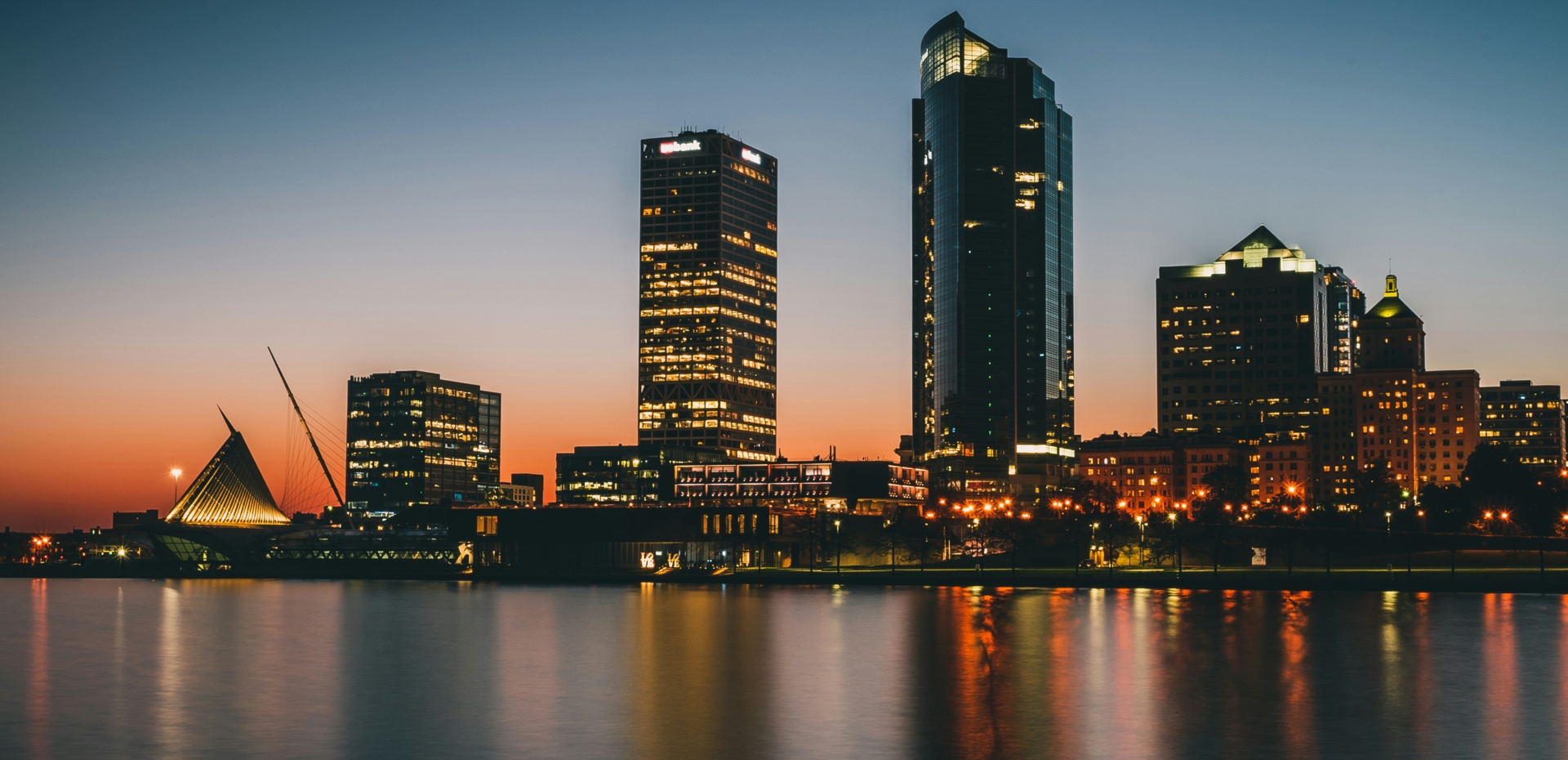Coming Home: Interview With Champions Retreat 2026 Host Dr. Kimberly McGlonn
October 10, 2025
Dr. Kimberly McGlonn—author, teacher, speaker, and Founder/CEO of Build It Boldly, and Grant BLVD—talks about her deep roots in Milwaukee, what it means to start generating waves from the Great Lakes region of the Midwest, and why CR 2026 is the perfect opportunity to exercise “community” as a verb in order to find a renewed sense of optimism.
We took a moment this past month to speak with Dr. Kimberly McGlonn, who was recently chosen as the emcee of our upcoming Champions Retreat 2026. We used that conversation to primarily ask her one thing: “What does it feel like to have the chance to lead the biggest North American B Corp conference while it convenes in Milwaukee—the place where you were born and raised?”
She’s now a firm fixture of the Philadelphia business leadership and entrepreneur community, but Dr. McGlonn’s relationship with Milwaukee has always been special. We touched upon what the city means—to her, to conference goers, and to the B Corp movement as it seeks to transform Ripples to Waves—as the space where Champions Retreat 2026 will take place.
Read excerpts from the insightful interview below, and make sure to purchase tickets for Champions Retreat 2026 or apply to serve as a sponsor, a speaker, or a content presenter during the next few weeks, as space is increasingly limited.
When you heard that you had been selected to lead Champions Retreat 2026, what was that like for you? Did you have any strong feelings about returning home and leading the conference?
When I got the call, and we worked out the details, it was like, “Oh, it’s gonna be in Milwaukee, so could you be the host?” I was like, “I would love nothing more than to do the kind of work I’ve been doing across the country, to do it near the neighborhoods that I grew up in and the people who have been a part of its story, you know, and in that place.”
So tell me, as a daughter of Milwaukee, how has the city—and how have the people of the city—shaped you, not only as a person, but as an entrepreneur and a leader?
I think that Milwaukee is really, in another way, a story of migration. It’s a very American story of migration. I grew up in right relationship with the Potawatomi. So it wasn’t like I was an adult that discovered, like, “oh, wow, there were indigenous people here!”
So, you know, I think that early legacy has always been with me, for sure. I would have the privilege of having an elementary school teacher who was a First Nation woman. One of my closest friends at elementary school was Potawatomi, so I spent time with her tribe, with her nation on the weekends.
“For me, Milwaukee was the first—and such a powerful way—of understanding the very nature of the American story.”
And so there’s that migration of what happened to those Indigenous people and where they continue to exist that shaped me. That awareness of the First Nation has always been with me. As a Black woman whose family migrated from Mississippi and Florida to Milwaukee, that story of migration in Milwaukee has shaped how I think about Movement and what it means to pursue safety. It’s always been there.
So I think for me, Milwaukee was the first—and such a powerful way—of understanding the very nature of the American story.
We talked a little at length on the Getting Down to Business podcast earlier this year about Philadelphia, where you built your business and regularly engage with B Corps in the community. How has that experience shaped your mindset when it comes to the theme of “Ripples to Waves”? Or, put another way, what does it look like, as a small business owner, to enact change that starts as a ripple but then transitions to a wave?
Great question! And, if you drill it down, I think what it’s asking is: “How do we embody, as small business owners, the spirit of movement builders?”
How do we recognize that the businesses that we build—by very design—set to challenge the consumer expectation of what it means to deliver on purpose? And does that mean, in terms of our own legacy, to think differently about how that same intentionality can shape the places where we live and play and work?
“How do we embody, as small business owners, the spirit of movement builders?”
What I’ve seen in Philadelphia in the almost 10 years that I’ve been in this small business community—and the majority of that in the B Corp, sustainable business community—is that when you approach things from a movement-building perspective, you really can make change happen. And that’s because the value we get in standing in this community, that is B Corp, is that we get to align very directionally with the ripple.
You know, the metaphor of the ripple to the wave is about the scale. It’s about going from small to big, but it’s also about creating strong, aligned movement. That idea that we’re going from the ripple to the wave is the way in which we actually catalyze what it is that we’re building.
“The value we get in standing in this community that is B Corp is that we get to be aligned very directionally with the ripple.”
The Midwest may often feel overlooked when it comes to gatherings. So, to you, what does it mean for us to congregate in the Midwest? Is there anything we may not be looking to or taking advantage of that we can learn from while we’re there? And even beyond that?
I think on the very surface level, it’s hard to think about making waves in America and miss out on the Great Lakes. So, you know, if we’re going to really think about what this metaphor offers by way of opportunity, it’s that there are incredible people who are sitting around the Great Lakes—in places like Milwaukee, Chicago, Detroit—who are figuring out how to connect the coasts.
If the goal is to build a national movement, then we have to connect the coasts. And we have to continue to feed life into those B Local leaders in the Midwest. They need to know that we see them, that we honor their work and their effort, and that we recognize the powerful positioning they have to actually give life to a national movement. We can’t overlook them.
“It’s hard to think about making waves in America and miss out on the Great Lakes.”
We need to recognize that we lose in movement building when we overlook the Midwest. And I think this is a great time to stand in solidarity with them. When you look at recent events and other groups that have been convening there, it’s apparent that there’s an apparatus that’s seeking to control the conversation in the Midwest and define their supposed values. Us showing up on the heels of that gives us an opportunity to reaffirm to people there that the conversation isn’t over and that the battle is not lost.
For a lot of our attendees, this will be their first time in the city. So, what do you recommend they do outside of the conference to experience the spirit of Milwaukee?
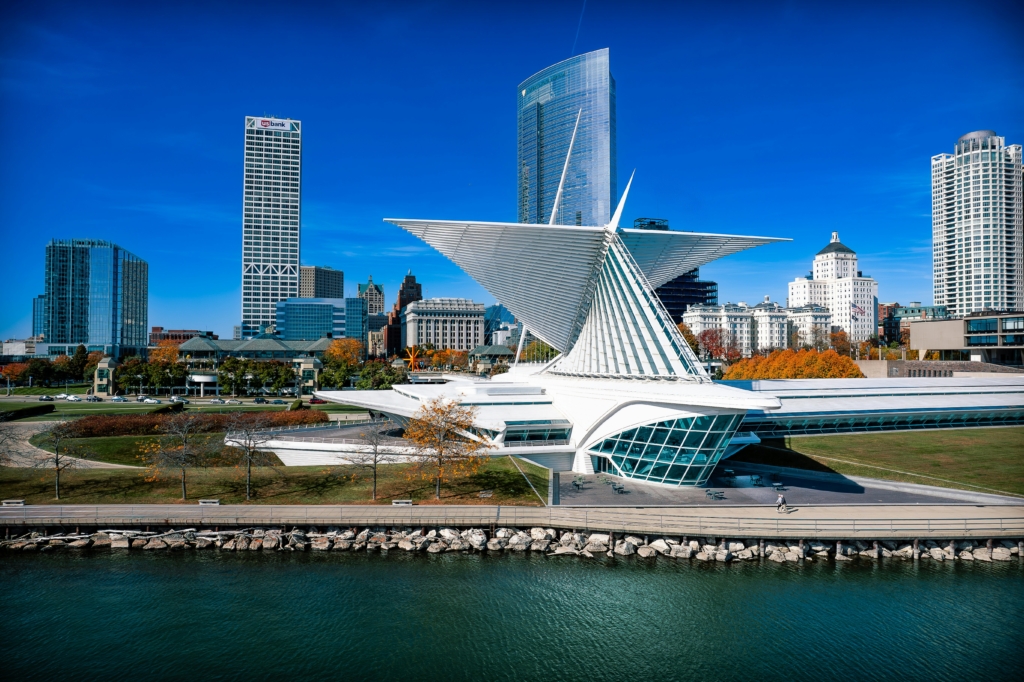
The iconic Milwaukee Art Museum, designed by Santiago Calatrava. Photo: Frederico Ramirez
Oftentimes, I meet people and say, “oh, you went to Milwaukee?” And they say “I love Milwaukee!” What really happened is they spent all their time on the East Side.
That’s an obvious focal point for many reasons. It’s where the conference will be. That’s also where, you know, Lake Michigan is. And that’s not something you could ever discount. At the deepest point, it’s like 926 feet. It’s the size of three states combined, Massachusetts being one of them, I believe. So it’s a massive lake, and I think that the spectacle of that, that body of water, is one we should all naturally pay attention to. So, you’re definitely going to spend some time on the East Side and at Lake Michigan.
I think you’d be remiss if you don’t make it to the Milwaukee Art Museum. Just the building itself is stunning. It was designed by Santiago Calatrava, and it’s a staple of the city’s look and image. There’s a gallery in particular where you can see nothing but water around you. It’s one of my favorite galleries in the world. So I would say, you know, for those people who are thinking about arts, you have got to go check out the Milwaukee Art Museum.
If you want a history of Milwaukee, you should really go to (and we should all be going) to the Milwaukee Public Museum. It tells a story of the anthropology of Milwaukee. It talks about the biodiversity of this region of the Midwest. And it’s a place I went as a little girl with my family, I mean, all of the time. And so even now, when I go back to Milwaukee, my daughter has been to the museum probably dozens of times throughout her childhood. So for those who are traveling with their families, they should definitely take their families to the Milwaukee Public Museum.
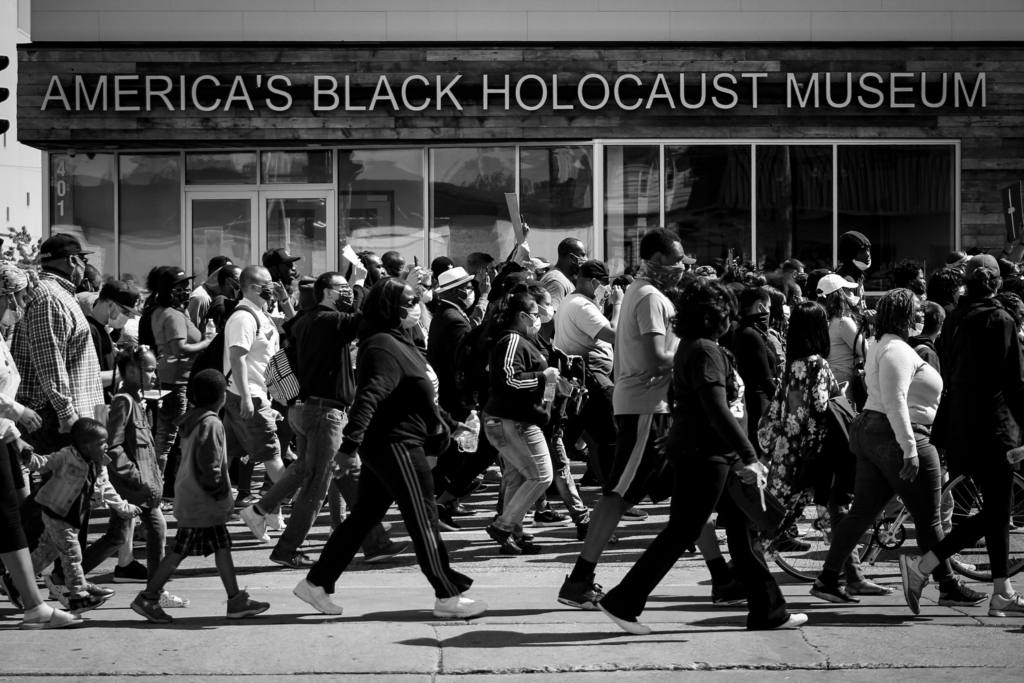
Protestors march through Bronzeville in 2020 after the murder of George Floyd. Photo: Edwin Gonzalez
The place that I hope more people drive themselves to is actually the Northside. As I said, when people come to Milwaukee, they usually spend all their time on the East Side. East Side is a predominantly white neighborhood. Northside is a predominantly Black neighborhood, and it’s so full of what is ultimately really another heartbeat of the culture of Milwaukee. So I would encourage people to go out there, be in solidarity, spend time, and enjoy the Northside.
“It would certainly be remiss if our tourist dollars don’t make it to Northside.”
Check out Bronzeville. You know, it’s got its Dr. King Drive. So there are a number of new Black-owned bookstores that just opened, restaurants that have opened, that I really love to experience going to when I’m back home.
So definitely make an effort to visit America’s Black Holocaust Museum and Bronzeville, in general. It would certainly be remiss if our tourist dollars don’t make it to Northside.
I want to pivot to business evolution. What is next for you, and how are you envisioning entrepreneurship at this stage? And how does the B Corp movement, or your certification, fit into that transition?
One of the things I’ve noticed—I should say, I’ve learned—in the eight years of always aligning my business design with people and planet is that I often felt, culturally, like I was pushing up a mountain of gravel. Because consumers, the consumer class, really were not aware of the reality of what businesses were designed to do, and the notion that they could be in a position to demand more.
And I think that for a lot of us leading B Corps, one of the things we’re challenged with is that we keep tapping into the same consumers, and we’re struggling to grow our consumer base because we don’t have enough consumer education.
So Build It Boldly is, on one level, an effort to distill the lessons learned from eight years in this community and figure out how to educate consumers differently. And that’s like the secondary goal.
The primary goal of how I plan to leverage the learning at scale is figuring out the bigger question of “how do I contribute to this movement from a different echelon? From a different altitude?” And that question, when you explore it deeply, really becomes “How do I teach people/leaders to think differently about the opportunities that they have, and hopefully get more people to get to the B Corp frontline?”
“How do we sculpt what we see as our identities and, by extension, our responsibilities, so that our businesses can continue to serve the greater good in this moment?”
So Build It Boldly is a movement in leadership design and leadership development. And the goal is to bring people into a different understanding of the inner work that a lot of us B Corp leaders have begun to do. That is the reason why we decided to position our businesses and our brands the way that we have. But it’s also about continuing to dial in on “how do we sculpt what we see as our identities and, by extension, our responsibilities, so that our businesses can continue to serve the greater good in this moment?”
What I really want to do is to get behind the veil of business design, at scale, through courses and books, and public access/public education. And I want to change the lexicon of leadership. And then I want to inspire more people to leverage that lexicon to signal to diverse audiences that they recognize the opportunities that businesses have to take care of people and planet, right now.
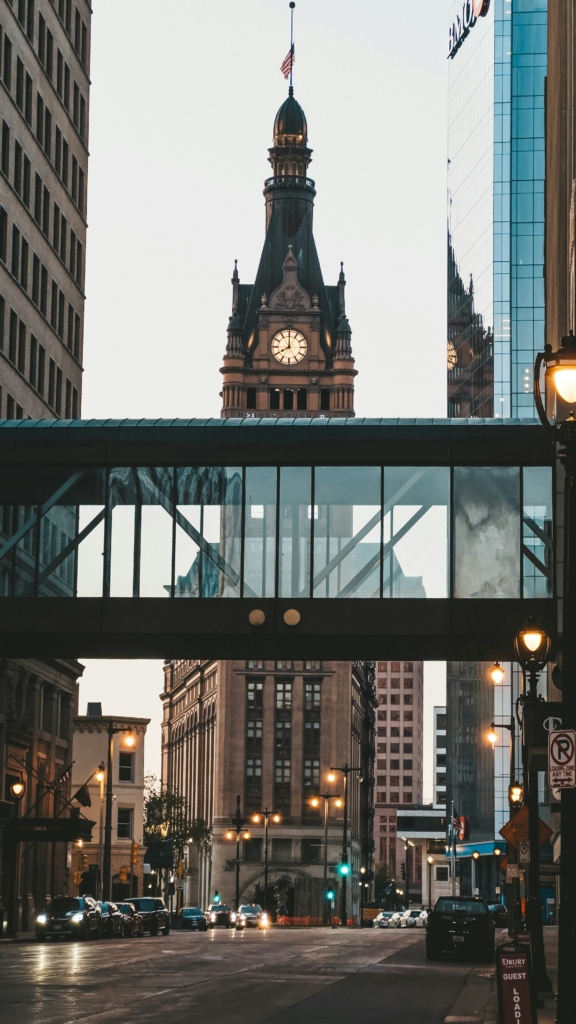
Clock tower atop Milwaukee City Hall. Photo: Chris Lynch
In addition to some of the other things we’ve discussed, what is it that you’re bringing to Milwaukee next year, and what do you want people to come and leave with?
I want them to come with the true complexity of how hard it is to navigate this moment.
I want them to come with this in the spirit of safety, understanding that recognition can be held; that they don’t have to deny their anxiety, confusion, and uncertainty; that they can bring that with them to Milwaukee. They can come knowing that there’s no need to deny that, or to package it up.
And I want them to know that they will leave, in the care of this conference and this gathering, with a renewed sense of optimism—that, while everything is seemingly on fire, beautiful things can be planted in soil that’s been scorched. And that the fight isn’t over, and that they’re not fighting alone.
I want them to know that they will leave, in the care of this conference and this gathering, with a renewed sense of optimism—that, while everything is seemingly on fire, that beautiful things can be planted in soil that’s been scorched. And that the fight isn’t over, and that they’re not fighting alone.
Is there anything else you want to touch on, as it relates to the Champions Retreat, or being a B Corp?
This is a time for exercising the verb of community, which is being together in the spirit of truth, vulnerability, and collaboration.
I’m really excited for everyone who’s decided to commit to this Champions Retreat because I think it’s going to be a really timely and urgent opportunity to remember why we got started and why we’re not giving up.
About Champions Retreat 2026
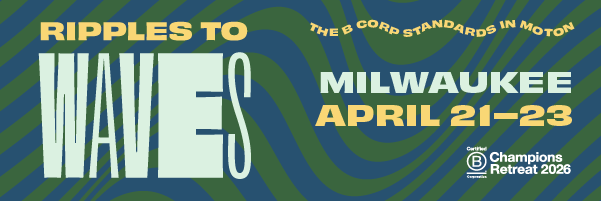
Held at the Baird Center in Milwaukee, WI, from April 21–23, Champions Retreat 2026 is the key catalytic and inspirational event for the B Corp movement in North America. It’s a space where movement builders gather to deepen connections, align on purpose, and move from ideas to action.
This year, we honor those creating shifts in visible ways and those behind the scenes who are steady forces of good—setting standards, shaping culture, and influencing systems. Whether bold or quiet, local or global, incremental or abrupt, these efforts ripple outward to create waves of change.
Early bird tickets are still available as of this article’s publication, so take action, and reserve your tickets now!
About Dr. Kimberly McGlonn
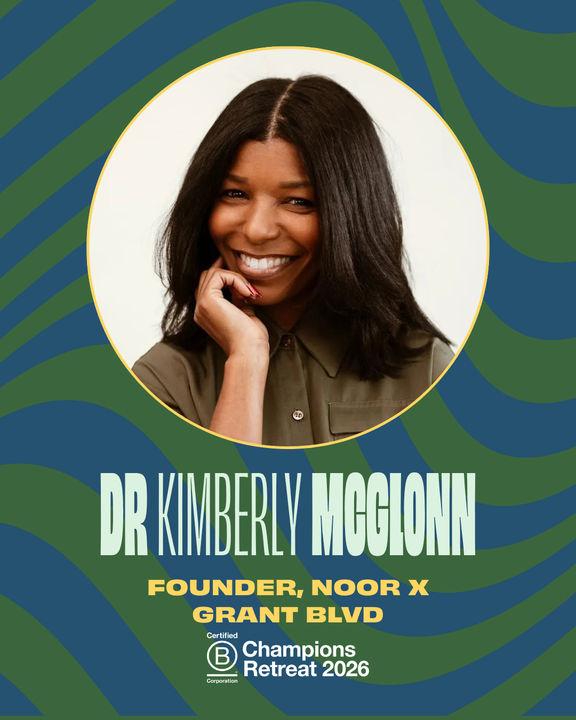
The honored host for the upcoming Champions Retreat 2026, Dr. Kimberly McGlonn, is the founder of NOOR by Grant BLVD and Build It Boldly. A four-time graduate of Louisiana State University, Dr. McGlonn obtained a Master’s in Education in Curriculum & Instruction and obtained her Ph.D in Curriculum & Instruction. She is currently a part-time faculty member at Drexel University for the Westphal School of Design and sits on the Mural Arts Philadelphia Board.
Copyright B Lab U.S. & Canada
B The Change gathers and shares the voices from within the movement of people using business as a force for good and the community of Certified B Corporations. The opinions expressed do not necessarily reflect those of the nonprofit B Lab.
Sign Up for our B The Change Newsletter
Read stories on the B Corp Movement and people using business as a force for good. The B The Change Newsletter is sent weekly.
